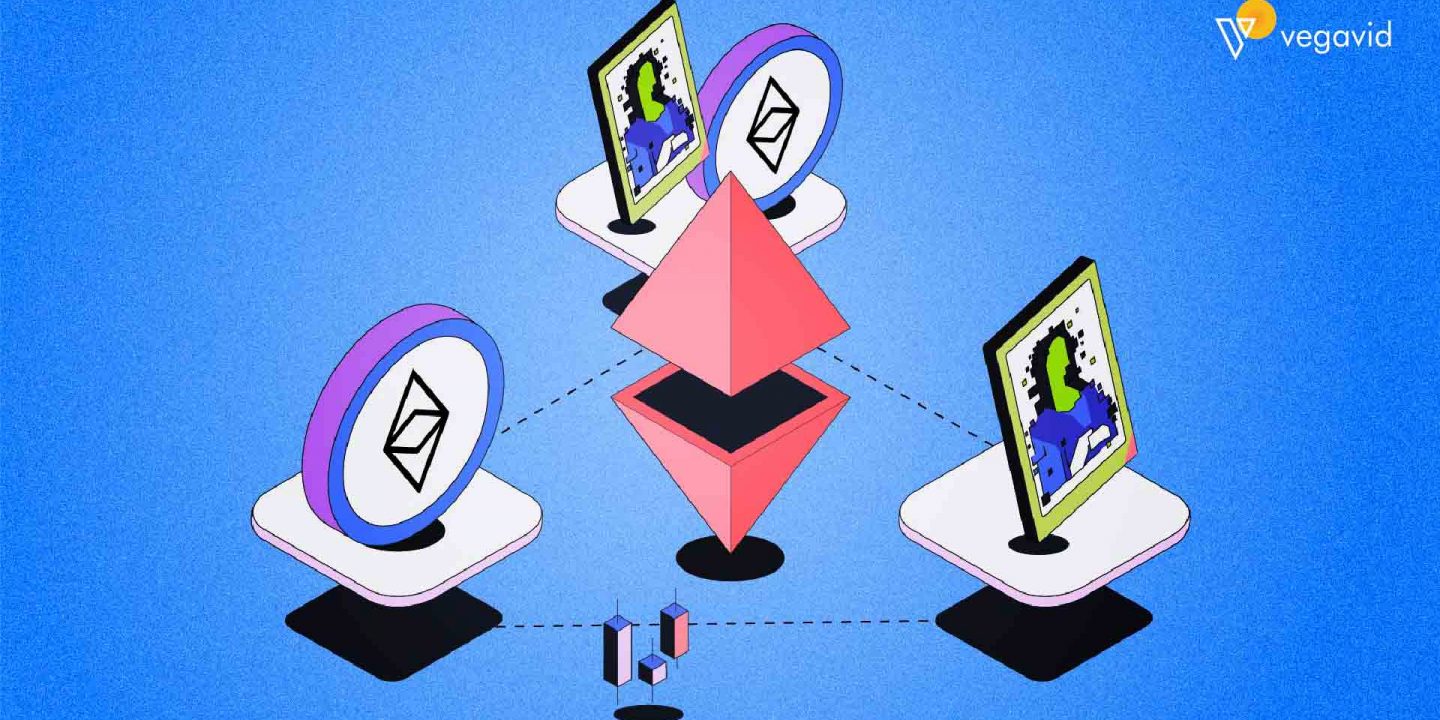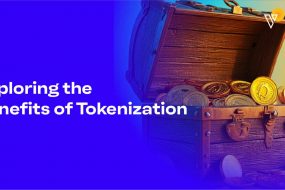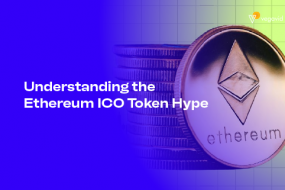
The growth of blockchain technology and cryptocurrencies has led to the upward push of digital property that can be traded or used within decentralized programs. Although Bitcoin was the first cryptocurrency, it does not help additional features required for trendy greater complex use cases. Ethereum emerged as the chief in programmable blockchains and allowed for the advent of virtual assets referred to as tokens.
This brought about the creation of the ERC1155 fashionable in 2018 which aimed to assist both fungible and non-fungible tokens on an unmarried smart settlement. Since then, usage of the various Ethereum token standards has grown massively. In this blog, we analyze the important thing variations between ERC20, ERC721, and ERC1155 requirements inclusive of their capability, implementation, and most appropriate use instances to recognize how these standards have evolved through the years.
Understanding ERC20 Tokens
The ERC20 token standard is a technical specification used for smart contracts on the Ethereum blockchain that allows for the creation of fungible tokens. Drafted in 2015, it has become the most widely used standard for issuing tokens on Ethereum and provides interoperability across the growing decentralized finance (DeFi) ecosystem.
ERC20 allows developers to easily deploy customizable token contracts, which defines basic functions like total supply minting, token transfers between addresses, and event tracking for building mirrors and notifications into interfaces. Some key functions included name (), symbol (), decimals (), totalSupply (), balance (), transfer (), and transfer form ().
By implementing these functions, all ERC20 tokens can be used interchangeably by wallets, exchanges, and other applications. Anyone can send, receive, and interact with any ERC20 token in the same basic manner. This common standard helped spur immense growth and adoption across the Ethereum network.
Common use cases for ERC20 tokens
Common real-world uses of ERC20 tokens include fundraising through initial coin offerings (ICOs), creating digital payment options and assets for decentralized applications (DApps), building stable coins to facilitate crypto-based commerce, powering organizational governance models, and enabling new forms of crowdfunding and community investment.
One of the earliest and most well-known uses of the ERC20 standard was for issuing tokens on the Ethereum network during ICOs to raise capital for new blockchain projects. From 2017-2018, over $20 billion was collectively raised through ICOs launched using the ERC20 format on Ethereum. This validated the standard and network effects kicked in.
Advantages and limitations of ERC20 tokens
Many organizations now issue ERC20 governance tokens to decentralize decision-making. Holders can vote on proposals or even potentially earn dividends. Projects in creative industries are experimenting with new business models around ERC20 fan tokens, revenue sharing, or concert/event tickets. cross-chain stablecoins like DAI are also built as ERC20 tokens.
At the same time, scaling challenges and transaction congestion on Ethereum have prompted discussions about how to improve ERC20’s flexibility to enable greater throughput at lower costs. Proposed upgrades like ERC777 and ERC1155 aim to expand the standard’s functionality to include things like batches, approvals, and non-fungible tokens (NFTs).
While ERC20 helped propel Ethereum’s early success, problems of scalability, interoperability, and limited use cases persist. New blockchains claim to offer technical advantages, but Ethereum still holds an enormous network effect advantage due to its vibrant DeFi ecosystem built on the back of the ERC20 standard. In summary, ERC20 opened the floodgates for tokenized assets and decentralized business models on the blockchain.
Exploring ERC721 Tokens
ERC721 is a token well-known on the Ethereum blockchain that implements non-fungible tokens—that is, tokens that can be precise and no longer interchangeable with each other. This differs from cryptocurrencies like Bitcoin and Ether which can be fungible (every unit is similar to every other). The ERC721 fashionable presents a not-unusual set of guidelines for creating verifiably rare, one-of-a-type digital assets on Ethereum.
Each ERC721 token represents a unique, indivisible asset, in contrast to fungible tokens wherein each unit is equal. For example, 1 Bitcoin may be exchanged for any other 1 Bitcoin, however, 1 CryptoKitty NFT cat is distinct from every different CryptoKitty in life.
The ERC721 general additionally permits token metadata—records like a name, description, photo, attributes, etc.—to be stored without delay on the blockchain with the token. This on-chain metadata is what distinguishes non-fungible tokens and makes virtual shortage possible.
Unique characteristics of ERC721 tokens (non-fungibility)
There are a few key properties that ERC721 tokens possess that make them groundbreaking:
- Non-fungibility – Each token is unique instead of interchangeable, which provides verifiable digital scarcity.
- Proof of ownership – Tokens are tied to one owner at a time, with ownership recorded on the blockchain ledger.
- Metadata support – Rich data can be associated with each token, stored immutably on-chain.
- Transferability – Tokens are freely transferable to other accounts according to transfer logic coded into smart contracts.
- Interoperability – The standard makes tokens work across different platforms and wallets that support ERC721.
These attributes allow ERC721 tokens to represent digital collectibles, assets, certificates, rights, identities, and much more on the blockchain.
Delving into ERC1155 Tokens
ERC1155 tokens allow builders to create more than one token type in an unmarried smart agreement. This way you may have fungible tokens, non-fungible tokens, and semi-fungible tokens that everyone makes use of the same settlement code. ERC20 tokens are in simple terms fungible whilst ERC721 tokens are only non-fungible. ERC1155 bridges this hole in a widespread way.
Each token ID in an ERC1155 agreement represents a brand-new token type. The agreement defines the whole supply for each ID, and token balances are tracked in line with cope with, in line with ID. This allows a single settlement to symbolize a vast variety of tokens and token sorts.
Use Cases for ERC1155
The flexibility of ERC1155 makes it beneficial for a lot of digital asset use instances:
- Gaming – ERC1155 is super for gaming belongings like characters, objects, skins, etc. Developers can represent both collectible NFT belongings and fungible consumable property like in-recreation forex in a single settlement.
- Digital Media – ERC1155 can be used to mint limited edition collectibles like artwork or music. The token ID should outline the rarity or edition number.
- Financial Instruments – ERC1155 permits tokenizing actual-world property like real estate or commodities on the blockchain. Semi-fungibility is useful for representing shares, bonds, or baskets of assets.
- Supply Chain – Tokenizing physical products as they pass via a delivery chain is a good shape for ERC1155 tokens with details like serial numbers encoded within the ID.
Advantages of ERC1155
There are a few key advantages ERC1155 tokens have over ERC20 and ERC721:
- Batch transfers – ERC1155 supports batch transfers of multiple token types and IDs in one transaction. This further optimizes gas costs.
- Improved usability – End users only need to interact with one contract for different asset types. This provides a smoother user experience.
- Semi-fungibility – The ability to have tokens that are partly fungible unlocks entirely new use cases over just ERC20 or ERC721 alone.
Limitations of ERC1155
However, there are some limitations to consider as well:
- Less battle-tested – ERC20 and ERC721 are time-tested standards while ERC1155 is newer and has seen less adoption so far.
- Increased complexity – Implementing ERC1155 can be more complex than a basic ERC20 or ERC721 contract since it combines features of both.
- Support– Minor token standards don’t have as much support among wallets and exchanges yet compared to the major standards.
- Complicated– Metadata management is more complicated with multiple token types to track.
ERC1155 provides an exciting new token standard on Ethereum that unlocks new capabilities and use cases. While adoption is still early, ERC1155 could emerge as a go-to token standard for many types of digital assets thanks to its unique semi-fungible design. The potential gas savings and usability improvements make it appealing for asset-heavy applications like gaming and digital collectibles.
Comparing ERC20, ERC721, and ERC1155 Tokens
| Particular | ERC20 | ERC721 | ERC1155 |
|---|---|---|---|
| Standard | ERC20 is the original standard for fungible tokens on Ethereum. It was created in 2015. | ERC721 was created in 2017 as the first standard for non-fungible tokens (NFTs). | ERC1155 was created in 2018 to allow for both fungible and non-fungible tokens to exist on a single contract. |
| Token Type | ERC20 tokens are fungible, which means each token is identical and interchangeable. Examples include cryptocurrencies like DAI and USDC. | ERC721 tokens are non-fungible, meaning each token is unique. They are used to represent unique digital items like art, collectibles, game items, etc. | ERC1155 tokens allow for both fungible and non-fungible tokens to co-exist on a single smart contract. This provides greater flexibility. |
| Atomic Transfers | ERC20 transfers are atomic, meaning the full amount is transferred between wallets or the transfer fails. | ERC721 transfers are atomic, ensuring bundled transfers work as expected. | ERC1155 introduced batch transfers, allowing multiple assets of different kinds to be transferred together atomically. |
| Visibility | ERC20 token contracts control the total supply and balances for each address in plain sight. | ERC721 relies on approval/transfer from flows with off-chain metadata storage. | ERC1155 balances are tracked on-chain while allowing off-chain metadata to provide additional context. |
| Royalties | No royalty functionality is supported natively. | Royalties are supported natively through approval/transfer from flows. | Royalties are supported natively through approval/transfer from flows. |
| Interoperability | ERC20 is widely interoperable due to its simplicity and broad adoption. | Interoperability between independent projects is limited for ERC721. | ERC1155 improves interoperability compared to ERC721 by supporting batch transfers of fungible and non-fungible assets. |
| Use Cases | Fungible assets like stablecoins, branded digital assets, and game items. | Non-fungible digital collectibles, in-game assets, digital art, etc. | Both fungible and non-fungible assets like game items that have varying scarcity, digital collectibles with variable editions, composable assets, etc. |
In summary, ERC20 is best suited for fungible tokens, ERC721 supports non-fungible assets, while ERC1155 improves upon ERC721 by facilitating both fungible and non-fungible tokens on a single contract. The standards have continued to evolve and build upon each other by introducing new functionality over time to accommodate more complex use cases.
Conclusion
The introduction of the ERC20, ERC721, and ERC1155 standards has been monumental in the development of tokenization on Ethereum. ERC20 set up a foundation for fungible tokens whilst ERC721 paved the manner for non-fungible virtual property. However, ERC1155 has furnished the maximum flexibility by permitting each sort of token to exist on a single contract.
As the requirements of the blockchain enterprise became greater nuanced, every new popular learned from the preceding ones to make bigger capability. Going forward, we will count on the similar evolvement of token standards to house more modern use cases and technologies. Interoperability among chains may also be a key awareness location. Overall, the ERC requirements have unleashed outstanding potential for innovation by way of developing lightweight APIs for fungible and non-fungible properties on Ethereum and past.








